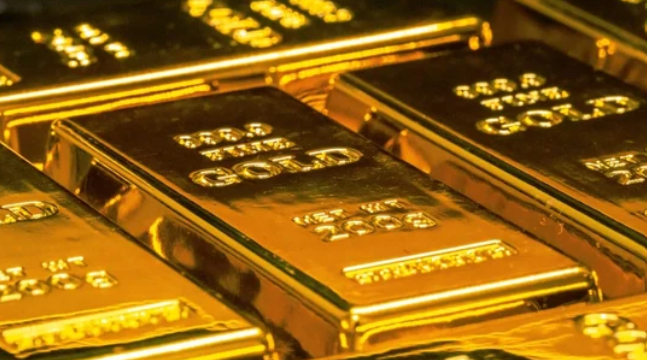
Gold Price has been a constant in human history, regarded for its beauty, rarity, and value. In India, gold holds particular significance, not only as a symbol of wealth but also as an essential part of cultural and religious practices. Whether it’s being purchased for wedding ceremonies, as an investment, or simply as a precious commodity, gold remains a key player in India’s financial landscape.
For gold buyers and investors, keeping track of the gold price is essential. Prices can fluctuate due to multiple factors, including international market trends, domestic demand, currency value, and the cost of production. Understanding these variables helps consumers make informed decisions when it comes to buying or selling gold.
Gold Price Across Major Indian Cities
As of today, January 2025, the price of gold varies across Indian cities, influenced by several factors such as local taxes, transportation costs, and demand in specific regions. Below are the gold prices for 22-karat and 24-karat gold in some of the key cities:
Delhi:
In Delhi, the price of 22-karat gold today is around Rs 58,100 per 10 grams, while 24-karat gold is priced at Rs 63,300 per 10 grams. Delhi is one of the largest markets for gold in India, with a high demand for gold jewelry and coins. Factors such as local events, weddings, and the economy play a significant role in determining the price of gold in the city.
Chennai:
In Chennai, which is known for its strong gold culture, 22-karat gold is priced at Rs 56,400 per 10 grams. 24-karat gold costs around Rs 61,400 per 10 grams. Chennai has a strong connection to the gold trade, and with its proximity to the major gold-refining hubs in South India, gold is relatively more affordable in comparison to other major metropolitan areas.
Ahmedabad:
Gold prices in Ahmedabad, Gujarat, are similarly competitive. As of today, the price of 22-karat gold in Ahmedabad stands at Rs 58,000 per 10 grams, and 24-karat gold is priced at Rs 63,200 per 10 grams. Gujarat has a thriving gold market, with a significant portion of India’s gold jewelry and export market originating from this state.
Bangalore:
Bangalore, the tech hub of India, has a significant demand for both jewelry and investment-grade gold. The current price of 22-karat gold in Bangalore is Rs 58,200 per 10 grams, while 24-karat gold is priced at Rs 63,400 per 10 grams. Bangalore’s large population and economic strength make it one of the key drivers of gold demand in South India.
Hyderabad:
In Hyderabad, another key city in South India, the price of 22-karat gold today is Rs 57,800 per 10 grams, and the price for 24-karat gold is Rs 62,900 per 10 grams. Hyderabad has a rich tradition of gold craftsmanship, particularly in the form of intricate jewelry designs, and this cultural affinity for gold drives its market.
Factors Affecting Gold Price in India
Gold prices in India are subject to several factors, both domestic and international, that influence their fluctuations:
- International Gold Prices: The global price of gold is a major determinant of domestic prices. When international gold prices rise, it often leads to an increase in prices across India, and vice versa. Global market trends, geopolitical events, and economic instability all contribute to fluctuations in gold prices worldwide.
- Exchange Rates: Since India imports a significant portion of its gold, the value of the Indian Rupee against the US Dollar plays a crucial role in determining gold prices. A weaker rupee leads to an increase in gold prices, as gold becomes more expensive to import.
- Local Demand and Festivals: India’s gold demand peaks during certain times of the year, particularly during festivals such as Diwali, Akshaya Tritiya, and wedding seasons. This increase in demand tends to push prices higher. Regional preferences, such as the popularity of gold jewelry in South India versus the interest in investment-grade gold in other regions, also influences prices.
- Import Duties and Taxes: The Indian government imposes customs duties on gold imports. Any increase in import duties tends to result in higher gold prices in the domestic market. Additionally, GST (Goods and Services Tax) on gold also affects its overall pricing structure.
- Economic Conditions: The broader economic environment impacts gold prices. In times of economic uncertainty or inflation, people turn to gold as a safe-haven investment. Conversely, in periods of economic growth, the demand for gold may decrease as other investment opportunities become more attractive.
Why People Buy Gold in India
In India, gold is more than just a commodity—it’s an essential part of life. Here are some of the main reasons why gold holds such importance:
- Cultural and Religious Significance: Gold is integral to major life events such as weddings, religious ceremonies, and celebrations. It’s also often considered a symbol of wealth and prosperity.
- Investment: Gold has long been seen as a safe-haven investment. During periods of economic instability or inflation, people often buy gold to protect their wealth. The yellow metal has historically maintained its value over time.
- Wealth Storage: In many Indian households, gold serves as a form of wealth storage that can be easily converted into cash in times of need.
How to Buy Gold
Gold can be purchased in various forms, including jewelry, coins, bars, and digital gold. Each form offers different advantages:
- Jewelry: This is the most common way to buy gold in India, especially for occasions like weddings and festivals. However, one must also consider making charges when purchasing gold jewelry.
- Gold Coins and Bars: For investment purposes, gold coins and bars are popular choices. These are typically bought in their pure form (24-karat) and can be easily stored and sold.
- Digital Gold: With the rise of online trading platforms, digital gold has become a convenient way to invest in gold without needing to physically hold it. Investors can buy gold in small quantities and store it digitally, which offers flexibility.
Conclusion
Gold continues to be one of the most trusted and sought-after commodities in India. The prices fluctuate based on various factors, and knowing the current rates in major cities like Delhi, Chennai, Ahmedabad, Bangalore, and Hyderabad can help buyers make informed decisions. Whether you’re purchasing gold for investment or personal use, staying informed about the daily price changes will ensure that you are making the best decision for your financial goals.
As gold remains a symbol of wealth, security, and tradition in India, it will undoubtedly continue to play a central role in both personal and national financial landscapes for years to come.





